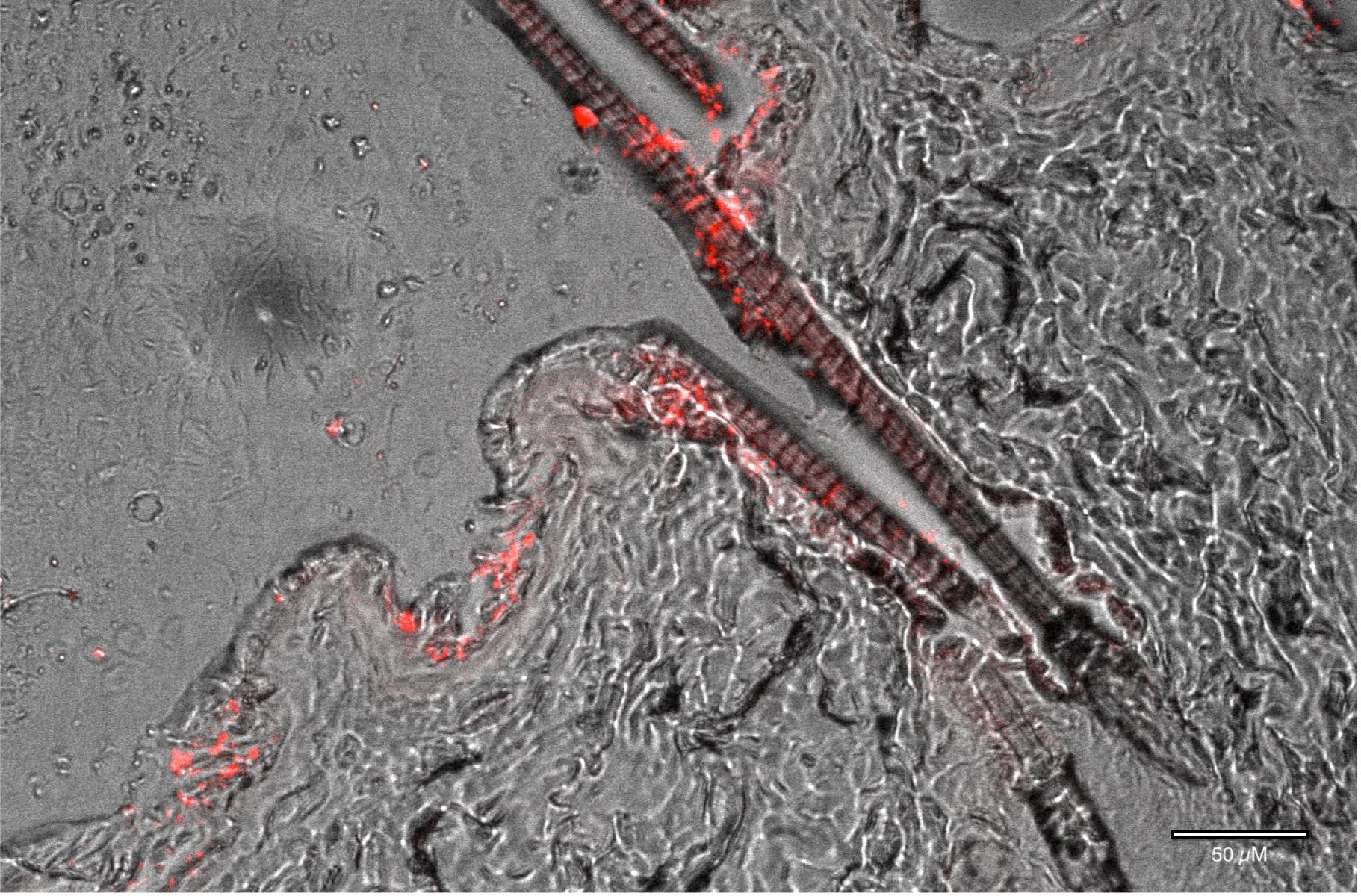- Acne
- Actinic Keratosis
- Aesthetics
- Alopecia
- Atopic Dermatitis
- Buy-and-Bill
- COVID-19
- Case-Based Roundtable
- Chronic Hand Eczema
- Drug Watch
- Eczema
- General Dermatology
- Hidradenitis Suppurativa
- Melasma
- NP and PA
- Pediatric Dermatology
- Pigmentary Disorders
- Practice Management
- Precision Medicine and Biologics
- Prurigo Nodularis
- Psoriasis
- Psoriatic Arthritis
- Rare Disease
- Rosacea
- Skin Cancer
- Vitiligo
- Wound Care
Article
Hot research focus: Drug delivery options
Therapeutic delivery is an important research focus. Better drug delivery has the potential to enhance skin penetration, make drugs more tolerable, and increase compliance.

Transmission electron microscopy showing the bactericidal effect of nitrogen oxide nano particles against MRSA. Photo: Adam Friedman, M.D.Therapeutic delivery is an important research focus, according to Adam Friedman, MD, assistant professor of medicine (dermatology)/physiology and biophysics and director of dermatologic research at Montefiore - Albert Einstein College of Medicine, Bronx, NY. He has won several awards for his research, including the American Dermatologic Association Young Leadership Award, for a decade of research identifying a way to utilize nanotechnology to generate nitric oxide (NO).
Dr. Friedman’s research is an example of the importance of drug delivery options. While NO is not new, its use has been limited because NO is short-lived, according to Dr. Friedman. It has the potential, however, to effectively heal wounds, fight skin infections, stimulate pigment production, enhance blood flow and more.
“[To date] I have nine publications showing that the technology can accelerate wound healing as well as clear up infection in MRSA-infected incision wounds. NO is also very good at clearing burn infections infected with candida albicans, a very common yeast in the environment that’s well known for wreaking havoc on burn victims,” he says.

Penetration of fluorescent nanoparticles into rat epidermis and follicular unit. Photo: Adam Friedman, M.D.But too much NO is not good. Too much NO will kill everything, Dr. Friedman says.
The focus of drug development research has long been on the drug, Dr. Friedman says. The transition in recent years has been to include an emphasis on how active agents are being delivered.
“If you look up what drugs have come out recently, you see acne drugs, for example, Epiduo [adapalene and benzoyl peroxide gel, Galderma]. They’re unique in how they’re being delivered. The active agents have been around.”
The development of drug delivery technologies have the potential, he says, to enhance topical drugs’ penetration through the skin, make drugs more tolerable and increase compliance.
“Hence, we have nitric oxide, a seemingly simple gaseous molecule which has escaped us for God knows how long in terms of our ability to use it in the clinical space, due to its high reactivity and short half-life,” he says. “In this case, it is the nanoparticle, the delivery system, that both allows us to now effectively deliver nitric oxide to the skin, and, more importantly, generate the NO in the first place. The nanoparticle, itself, is the key to creating the active agent-a ‘smart’ delivery vehicle if you will.”
READ MORE:
Sophisticated research capabilities, big data accelerate discoveries of mechanisms, drug targets
Closing gaps in psoriasis research









